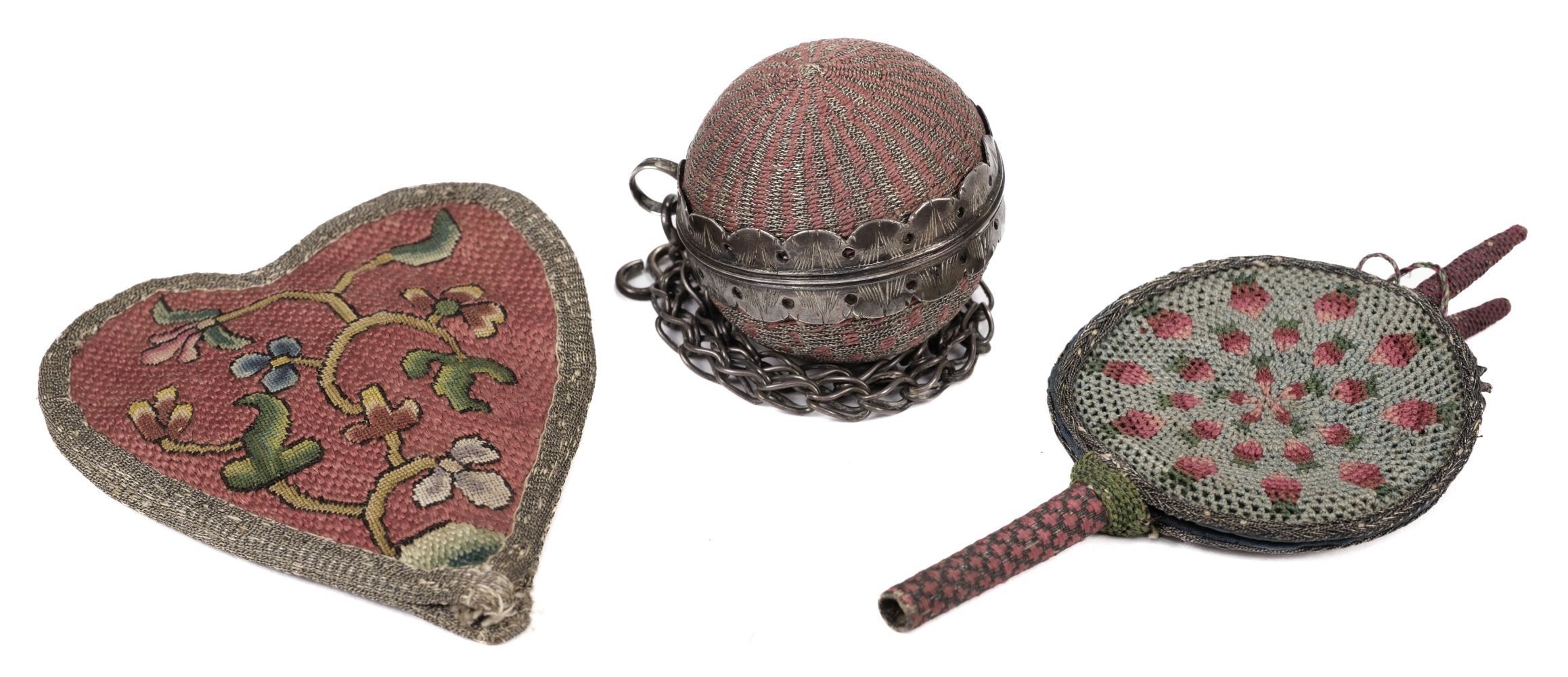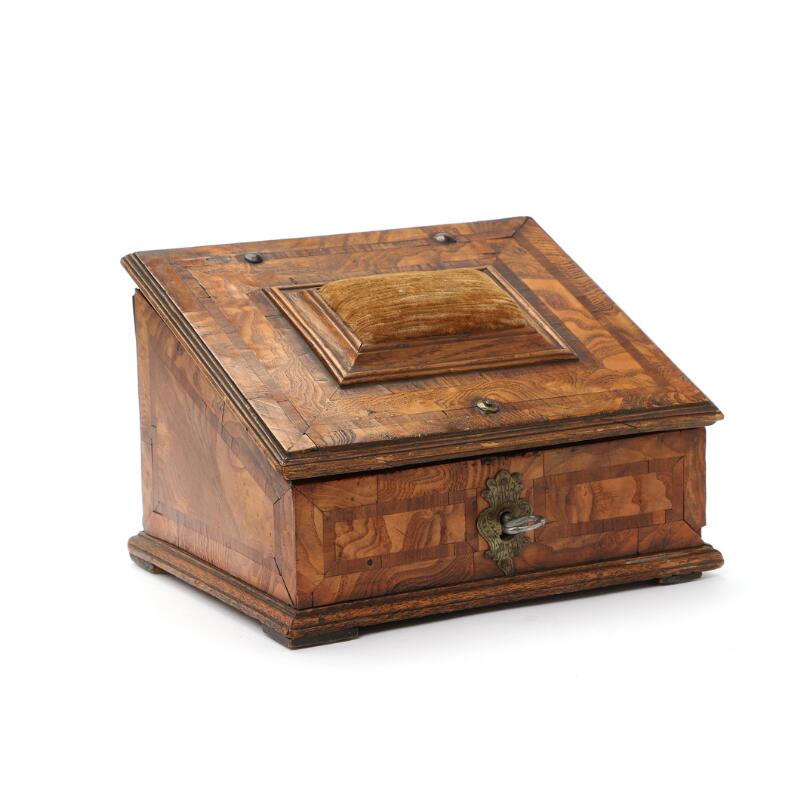Sewing. An 18th century sailor's hussif, hand-stitched sewing kit of dark green silk, unrolling to reveal a cream silk arched flap with flower design in red and green silk appliqués (silk ground just beginning to perish at left-hand edge), and 4 pockets in alternating cream and blue silk, ornamented respectively with a heart shaped mirror, gold foil anchor, oval mirror, and flower design, with beading and/or metal coilwork to each, a few small faint marks to silk of first pocket, terminating in a shaped blue silk pincushion, edged wih silver metallised braid and lace, flap with metallised tie, 44.5 x 13.5 cm (17.5 x 5.25 ins), together with a brown silk sailor's hussif similar, with interior of cream and green silk, ornamented as before, coilwork becoming loose in places, remains of metallised tie on flap, 31 x 12 cm (12.25 x 4.75 ins), plus an early Victorian embroidered hussif, worked in feather stitch in coloured wools, edges a little worn, opening to reveal 7 glazed linen pockets, lettered in contemporary ink 'Needles', 'Pins', 'Hooks', 'Tape', 'Silk', 'Cotton', 'Sundries', containing several printed packets of needles (and some pins and needles inserted inside flap), and a manuscript pattern for Baby Socks, dated April 1874, 31 x 13.5 cm (12.25 x 5.25 ins) (Quantity: 3) The word 'housewife' was first used in the mid 18th century to refer to portable sewing kits, which subsequently became known as 'huswifes', 'hussives', and, most commonly, 'hussifs'. Most soldiers and sailors owned a hussif, often a gift from their mother, sister, sweetheart or wife. The two sailor's hussifs offered here survive in usually good condition.
Sewing. An 18th century sailor's hussif, hand-stitched sewing kit of dark green silk, unrolling to reveal a cream silk arched flap with flower design in red and green silk appliqués (silk ground just beginning to perish at left-hand edge), and 4 pockets in alternating cream and blue silk, ornamented respectively with a heart shaped mirror, gold foil anchor, oval mirror, and flower design, with beading and/or metal coilwork to each, a few small faint marks to silk of first pocket, terminating in a shaped blue silk pincushion, edged wih silver metallised braid and lace, flap with metallised tie, 44.5 x 13.5 cm (17.5 x 5.25 ins), together with a brown silk sailor's hussif similar, with interior of cream and green silk, ornamented as before, coilwork becoming loose in places, remains of metallised tie on flap, 31 x 12 cm (12.25 x 4.75 ins), plus an early Victorian embroidered hussif, worked in feather stitch in coloured wools, edges a little worn, opening to reveal 7 glazed linen pockets, lettered in contemporary ink 'Needles', 'Pins', 'Hooks', 'Tape', 'Silk', 'Cotton', 'Sundries', containing several printed packets of needles (and some pins and needles inserted inside flap), and a manuscript pattern for Baby Socks, dated April 1874, 31 x 13.5 cm (12.25 x 5.25 ins) (Quantity: 3) The word 'housewife' was first used in the mid 18th century to refer to portable sewing kits, which subsequently became known as 'huswifes', 'hussives', and, most commonly, 'hussifs'. Most soldiers and sailors owned a hussif, often a gift from their mother, sister, sweetheart or wife. The two sailor's hussifs offered here survive in usually good condition.














Testen Sie LotSearch und seine Premium-Features 7 Tage - ohne Kosten!
Lassen Sie sich automatisch über neue Objekte in kommenden Auktionen benachrichtigen.
Suchauftrag anlegen